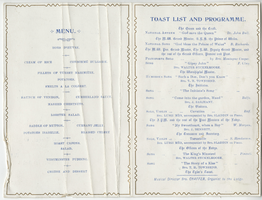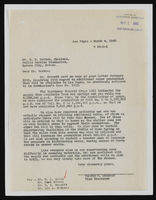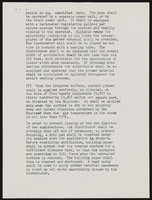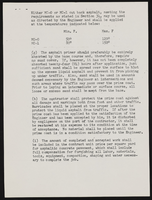Search the Special Collections and Archives Portal
Search Results
Anderson, George
George Robert “Bob” Anderson (1847?-1886?) was an early settler in Southern Nevada. He is best known for being the business partner of James Bernard Wilson. On January 31, 1875, they filed the deed to 320 acres located twenty-four miles west of Las Vegas, Nevada at the base of Sand Mountain in Cottonwood Valley. The property formerly known as ‘Williams Ranch’ or ‘Williams Homestead’ was renamed Sandstone Ranch. There they established a working cattle ranch and a goods delivery service.
Person

Film strip of individuals or Hoover Dam construction, image 011: photographic print
Date
Archival Collection
Description
Image
Kendall Stagg Collection
Identifier
Abstract
The Kendall Stagg Collection (1998-2000) consists of material documenting Kendall Stagg’s political races in northern Nevada and also details gay activism in Reno. The collection consists of Stagg campaign materials, a t-shirt from one of his campaigns, and documents pertaining to the Gay, Lesbian, and Bisexual Student Union at the University of Nevada, Reno and Gay Pride parade organizing in Reno.
Archival Collection
Johnny Eshow Haig Papers
Identifier
Abstract
The Johnny Eshow Haig Papers (1970-1990) are comprised of contracts, agreements, and correspondence of musician Johnny Haig, who worked as a trombone player and conductor at various hotels in Las Vegas, Nevada from 1955 until 2000. Additionally, the papers house extensive original music scores written by Haig. The papers primarily cover Haig’s later career in the 1970s and 1980s.
Archival Collection






